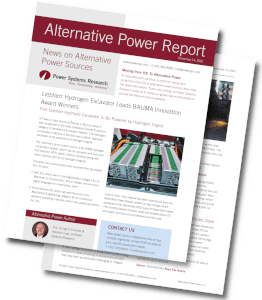240 Ton EV Mining Truck Can Charge in 30 Minutes

A 240-ton mining haul truck is being fitted with a 1.4 megawatt-hour (MWh) prototype battery system that global green energy company Fortescue has developed with equipment maker Liebherr.
UK-based engineering company WAE Technologies, (acquired by Fortescue in March 2022), completed and delivered the battery system to Fortescue’s workshop in Perth, Australia. The battery will be assembled and installed in the mining haul truck before it’s transported to the Pilbara in Western Australia for onsite testing this year.
The battery system marks several firsts for an electric mining haul truck battery: In addition to having energy storage of 1.4 MWh, it also has the ability to fast-charge in 30 minutes, and it can regenerate power as it drives downhill.
Source:Electrek: Read The Article
PSR Analysis: This is a good view of the potential for all mining trucks, but it should be noted that a lot of these huge mining trucks are diesel-electric to start with, (a diesel generator powering electric drives), so this is a matter of replacing the generator with the battery pack. They also can recharge on the way down, so the battery size can be relatively smaller. PSR
Guy Youngs is Forecast & Adoption Lead at Power Systems Research




